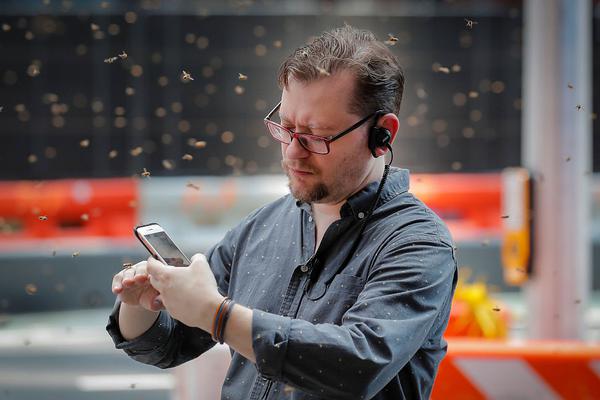【】
The National Park Service mission statement breathes some grand words: The conservation agency intends to preserve the country's natural resources "for the enjoyment, education, and inspiration of this and future generations."
But the Park Service can't keep out air pollution.
A new report published by the National Parks Conservation Association (NPCA) concluded that a whopping 85 percent of parks contend with unhealthy air. The problem is a respiratory toxin regularly created and found in U.S. cities, called ozone. The NPCA found ozone to be a "significant" concern in 87 parks, and a "moderate" issue in 267 parks.
This air pollution wafts into national parks from our potent industrial areas. There's no way to keep it out.

"We’re producing something that's being brought to the pristine areas -- it impacts our remote and thought-to-be-clean places," said Gabriele Pfister, deputy director of the National Center of Atmospheric Research’s atmospheric chemistry lab who had no involvement in the report.
"Ozone is toxic. It damages our airways," she added.
Tweet may have been deleted
Ozone comes to life when emissions from vehicles, fossil-fuel power plants, and industry release invisible gases called nitrous oxides, or NOx, into the air. When the sun hits these gases -- along with a mix of other chemicals called volatile organic compounds (VOCs) -- it then creates ozone. "In the morning, the sun comes up, and you start cooking it," explained Pfister. "You start creating ozone."
In some places -- like Pfister's nearby Rocky Mountain National Park -- this air pollution is lifted by normal, rising wind patterns into the mountains.
But pristine, forested land can also make its own ozone. Trees, bushes, and other plants all naturally emit compounds into the air that react with NOx gases and make ozone, explained Anthony Wexler, director of the UC Davis Air Quality Research Center who took no part in the research.
"You’ll see ozone concentrations in places that aren’t emitting much NOx," said Wexler. "The NOx comes from what we do."
SEE ALSO:Fearless TV weather forecasters air the planet's soaring carbon levelsThe solution, at least on paper, is simple. Producing energy and fuel without the combustion processes that make NOx. "Low amounts of NOx would mean low amounts ozone," emphasized Wexler.
In reality, of course, transforming the nation's energy system will require enormous political and societal ambition.
Although there's still ozone swirling around many national parks -- especially those near industrialized areas -- things are certainly much better today than in the 1970s, when air pollution was so bad that Los Angelenos could taste the foul air. This is thanks to the Clean Air Act, which mandated that automakers and industry slash their polluting emissions. "The story is we’ve done a lot to clean up air pollution," said Wexler. "It's a whole lot better than it used to be."
But clearly, air pollution still remains. And in many national parks, you'll breathe it.
Then, of course, there's the growing problem of wildfires -- which create tiny bits of pollution called particulate matter that saturate the skies in many national parks. It's the burnt forest, floating through the air, and there will be more it: A more potent fire regime has emerged out West. Overall, wildfires in the U.S. are burning twice as much land as they were in the early 1980s and they’re burning for weeks, not days, longer.
 Ozone formation.Credit: EPA
Ozone formation.Credit: EPADuring the summer of 2018, smoke filled Yosemite Valley. In a large swath of the West, the worst days of particulate pollution are getting worse.
Breathing particulate pollution is bad for your heart, as a number of studies have linked breathing this matter to accelerated heart disease. Meanwhile, ozone damages airways, exacerbates asthma, and -- with prolonged exposure -- can result in premature death, explained Pfister.
That's why Pfister often goes hiking in the morning, before sunlight reacts with NOx to form ozone, which can then find its way into her huffing lungs. "The early bird gets the worm," she said.
But hundreds of millions of national park visitors are inevitably exposed to elevated ozone levels each year. It's a product of our industrialized society, for now.
"When people think of iconic parks like Joshua Tree or the Grand Canyon, they think of unspoiled landscapes and scenic views," said NPCA president Theresa Pierno,in a statement. "I think they would be shocked to know that these are actually some of our most polluted national parks."
Featured Video For You
Ever wonder how the universe might end?
相关文章

Give your kitchen sponge a rest on this adorable bed
Our kitchen sponges do a lot of work. Don't they deserve a good night's rest?"Sure," said design stu2025-04-29
David Tennant and Billie Piper re
Okay, so it might not be quite what you're thinking -- yes, David Tennant and Billie Piper are teami2025-04-29
Tesla's Solar Roof tiles now available for pre
Tesla is not content with just a spot in your driveway. The company today began accepting orders for2025-04-29
Photographer accidentally captures the wrong couple's engagement
Photographer Jacob Peters went to great lengths to shoot a client's proposal. It just turned out tha2025-04-29
One of the most controversial power struggles in media comes to a close
One of the world's biggest media companies has been embroiled in a complex personal and professional2025-04-29 New Mutantshas some new stars.The X-Menspinoff has just cast Game of Thronesalum Maisie Williams and2025-04-29
New Mutantshas some new stars.The X-Menspinoff has just cast Game of Thronesalum Maisie Williams and2025-04-29


最新评论